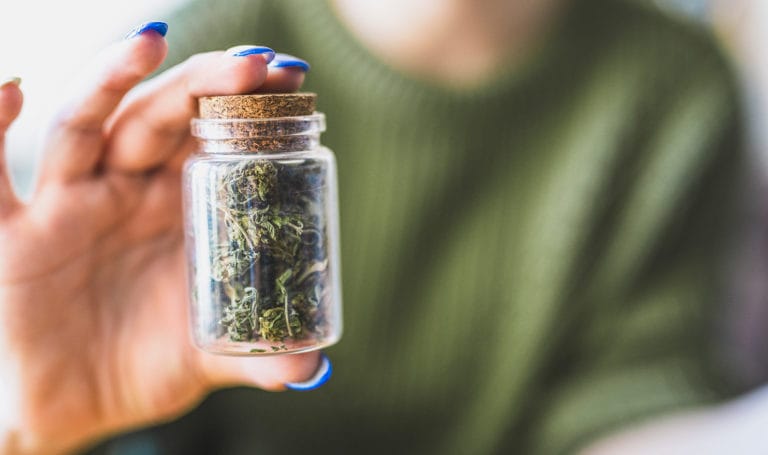ABOUT THE CANNABIS SUPPLY CHAIN

As a cannabis business owner, how much do you know about the supply chain you take part in? Maybe you don’t own a business yet but are wanting to learn as much as you can about the seed-to-sale process. Did you know that your cannabis business risks change depending on where you are in the supply chain of the industry? It can be tricky to understand the type of risk you face, but today Insurance Canopy is here to tell you more about the cannabis supply chain and how your business fits.
The cannabis industry supply chain is made up of five different stages, and no matter your business’ stage, you should have some knowledge about how the moving parts of this chain work together. The five stages of the cannabis supply chain include
- cultivation of the cannabis plant
- extraction of cannabinoids
- lab testing of those extractions
- distribution
- and retail
It’s important to know that many newly legal cannabis states start off with a vertically integrated system where one cannabis license holder is responsible for their entire supply chain process. Business owners may be the cultivator, extractor, tester, and distributor for their plants to start out but as the landscape changes, the specialization will too. We’ll detail more about these areas below.
CULTIVATION
The first stage in the cannabis supply chain has everything to do with growing. The cultivation stage—or the growing stage—is just that :growing, cultivating, and harvesting the cannabis plant to prepare it for dispensary shelves or extraction. The process is similar for both CBD and THC growing efforts, and this is where many small businesses start out.
Depending on the state you live in, you could start a grow in your own home that could evolve into a larger business endeavor. Growing indoors allows for a more controlled environment with less risk than growing outside. If you’re interested in learning more about cultivation, check out this article from WeedMaps that explains the difference between growing plants for medicinal purposes versus recreational purposes and how THC and CBD levels can vary based on parent plants.
EXTRACTION
Cannabis can be used for many reasons and in a variety of forms. As scientists’ interest has increased, the study of plant derivatives has become quite extensive. These days, when people talk about marijuana and CBD, they’re not really talking about buds and flowers. Rather, they’re talking about cannabinoids, which are the active compounds in cannabis. Depending on what a cultivation business owner is growing for—high CBD extraction, high THC extractions, flower-to-shelf plant material, or for other purposes—the extraction results will be different and used for different products.
Because of new regulations and the possible deschedling of marijuana, some states are opting to launch restrictions on distillate or oil-based products such as vapable cartridges. This means that after you’ve gone through the process of distilling and extracting oil from the cannabis plant, the testing process is much more rigorous and involved.
TESTING
Before the flowers, buds, and oils can be used for products or sent for distribution, they need to go through a series of tests. The tests are designed to ensure that the products are safe to consume and will be accurately labeled. Scientists test cannabis for the following:
- Potency
- Heavy Metals
- Pesticides
- Residual Solvents
- Terpene Profiles
- Microbial and Fungal Growth
- Myotoxins and Aflatoxins
- And More
Lab testing varies by state. Some lab facilities require many instruments for these tests, allowing government entities to be the first to set up these labs. As the cannabis industry continues to expand, smaller labs have opened, creating more business opportunities. You can find more information about what your state requires by checking out this Leafly article.
DISTRIBUTION
According to Bensinga, cannabis distributors come in a few forms. Depending on where you live, distributors can do one or a combination of the following:
- Shipping product on behalf of the wholesaler
- Warehousing product on behalf of the wholesaler
- Sales team for the wholesaler
- Collecting payments from retailers and moving money on behalf of the wholesaler
- Contract manufacturing of product
Industry experts attribute the various forms a distributor can take to the industry still being relatively new. In time, supply chain members can hope to see large scale change in how cannabis is distributed to retailers for product creation or sale.
RETAIL
The final stage of the cannabis supply chain is retail. This is the most visible state of the industry, allowing you to see the sheer amount of cannabis products available on the market in your state. Retailers are available through brick-and-mortar storefronts as well as online fronts. In states where legalized marijuana has been a thing for a while, you’ll find more opportunities to open small dispensaries or head shops whereas regulations are stricter in newly legal states.
Depending on the kinds of products dispensaries and other shops decide to sell, they’ll have different regulations to abide by. Purely medical dispensaries will have stricter rules and will be run by actual pharmacists as opposed to recreational ones filled with marijuana enthusiasts. And if you’re hoping to sell online there may be a few more hoops to jump through. Cannabis still is federally illegal and business owners must take into account every regulation.
YOUR PLACE IN THE CHAIN
We hope you’ve learned more about the cannabis supply chain than you previously knew and have a better understanding of how things work together. Simply being a cannabis enthusiast isn’t enough to break into the industry, you need a little background at every stage.
Looking to Protect Yourself Against Risk? Get Insured
Do you have the proper coverage to protect against the financial fallout of a lawsuit? Your cannabis products and your business are at risk of a liability claim caused by your products and you need to have coverage in place.
Unfortunately, accidents happen and no one wants to think that their product could cause harm to another individual. However, it would be better to err on the side of caution rather than find yourself unprotected while facing a lawsuit. As long as you are, creating, distributing, or designing cannabis products your business could face risks.






